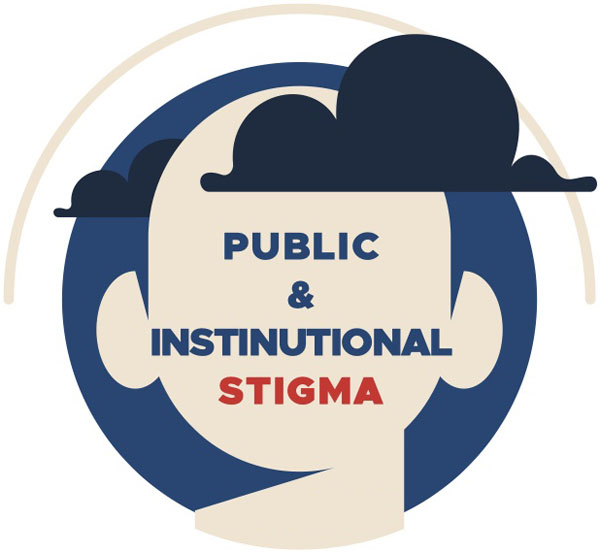With our country’s two mass murders having taken place very recently, the discussion about mental health issues has become a primary subject on social media (itself even possibly thought to be a contributing factor for loneliness). All forms of printed or computerized/televised press have weighed in on the subject. Stiffer laws for the prevention of lethal weaponry usage are now being discussed and, hopefully, passed. The background of a world and country suffering from extreme difficulties has brought mental illness to new raging proportions with the critical need for daily conversations. The Covid-19 pandemic, the Ukrainian/ Russian malaise, and the U.S.’s own economic decisions are just a few of these problems. Both public and institutionalized stigma for mental health are affected during these difficult times in history.

Psychiatry.org notes an editorial in the Lancet Medical Journal, “the impacts of stigma are (now) pervasive, affecting political enthusiasm, charitable fundraising and availability, support for local services and underfunding of research for mental health relative to other health conditions.” The importance of seeking treatment for even the mildly mentally ill person, indeed, does require much new open discussion to remove the stigma and prejudice that has in the past been wrapped around mental illness.
In fact, according to a Google search, mental health numbers are increasing worldwide. There has been a 13% rise in mental health conditions and substance abuse disorders in the last decade up to 2017. These situations now cause individuals to be living 1 to 5 years with a disability. In 2020, according to MentalHealth.gov, one in 20 Americans lived with a serious mental illness, such as schizophrenia, bipolar disorder, or major depression. Suicide, a leading cause of death in the United States, was the second leading cause of death for ages 10-24 that year. It accounted for 45,979 lives lost. This number was double the number of people who died due to homicide at the same time. In fact, according to Wall Street Journal (June 6, 2022), “Among females ages 10 to 14, the rate of suicide tripled between 2007 and 2020, from 0.5 per 100,000 to 2 per 100,000. Among males the same age, the rate jumped from 1.2 per 100,000 to 3.6 per 100,000 over the same period (the National Center for Health Statistics).”
The vast majority of people with mental health issues are no more likely to be violent than anyone else, according to MentalHealth.gov. More often, people with severe mental illness issues are “over 10 times more likely to be victims of violent crime than the general population.” Mental health problems are the result of many contributing factors, such as (1. genetic (family history), physical illness, injury, or brain chemistry, and life experiences.
Psychiatry.org states, “Research (2016) shows that knowing or having contact with someone with mental illness is one of the best ways to reduce stigma. Individuals speaking out and sharing their stories (involving a personal long-term commitment) can have a positive impact.” In fact, many celebrities such as Demi Lovato, Michael Phelps, Dwayne “The Rock” Johnson, and Lady Gaga have shared their mental health challenges and brought their discussion into the general media and everyday conversation.
Here are five ways then that family and friends can reach out to help their struggling loved ones, thereby also aiding in the removal of stigma from them:
1. Tell them that you are available to help
2. Find them mental health services
3. Learn and share the mental health facts, especially if you hear something that isn’t true
4. Treat them with respect, just as you would anyone else
5. Refuse to define them by their diagnosis or use of incorrect labels (such as “crazy,” instead of first-person language).
NAMI (National Alliance on Mental Illness) offers these more in-depth suggestions for sharing of ideas between those with mental health issues and their family and friends:
1. Talk openly, such as sharing on social media
2. Educate yourself and others by sharing facts and accurate experiences
3. Be conscious of language (words do matter)
4. Encourage equality when discussing physical health treatments and mental illness treatments
5. Show compassion for the mentally ill
6. Let the media know when they are using stigmatizing language in discussing mental illness
7. ***For the patient, choose personal empowerment over shame.
The American Psychiatric Association (APA)’s Foundation’s Center for Workplace Mental Health suggest organizations strive to “create a culture in which mention of depression, anxiety, post-trauma, and other common illnesses become as mentionable as diabetes, hypertension, and migraines.”
Finally, across our country numerous organizations and campaigns can be found focusing on addressing the issue of mental health stigma and discrimination through encouraging dialogue about mental health and raising awareness, understanding, and empathy. Here are some outstanding examples to investigate in your own personal efforts to eliminate often destructive mental health stigmas:
1. BRING CHANGE TO MIND/Activist (Glenn Close)
2. STAMP OUT STIGMA
3. MAKE IT OK
4. THIS IS MY BRAVE/Community Storytelling Theatre Show;
5. HOW ARE YOU REALLY/Mental Health Coalition
6. SAFE SPACE RADIO
7. NAMI’s STIGMA FREE/including a stigma quiz (CureStigma.org)
8. HEALTHY MINDS/Dr. Jeffrey Borenstein and the Brain & Behavior Research Foundation (including next-generation therapies)




